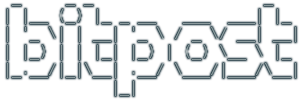GPT is a newer Intel-provided partition format replacement for the ancient MBR style, that only allows 4 primary partitions and, most importantly, can’t be used to boot off of drives 3TB or larger (yes you will be using one soon!). So I thought I would prepare for the future and get all set up. What a waste of time… (continued…)
I’m using the cross-platform Qt C++ library to write an app for linux, OS X, and Windows. Qt source can be compiled to a wide range of systems and devices, with two obvious omissions that are not likely to be filled any time soon: iPhone and Android. I know I am going to need client code on these devices, and I know that the client code is going to be extremely similar to the Qt client code. How do you design for this?
Applying the concept of separation of concerns, you design your classes into layers. The base layer consists of high level concept classes that perform all fundamental actions using generic data types. Then, the derived layer is used to get the job done, using the most useful and powerful lower level tools at your disposal. Push everything you can into the base layer, until you hit the limit of non-portable information and data types. It’s a beautiful way to code.
To be more specific, in my case, the base class layer will be using C++, including the STL, which gives me tons of power. I will pull in boost if even more horsepower is needed. The derived class layer for the first round of clients will be Qt-powered. The Qt library has a massive amount of real-world usefulness, supporting everything from http to video playback. I have not gotten to the iPhone and Android clients yet so the whole concept may change, but here’s my current plan. The iPhone code will be Objective C with the C++ base class layer linked in. I will attempt to incorporate the C++ base class layer into the Android code using the NDK.
Here’s a quick example of the layer approach, in this case used to quickly set up profiling using Qt’s QTime class at the lower level: (continued…)
Team Foundation Server (TFS) continues the long Microsoft tradition of horrible source control. It’s getting more annoying every day working with proprietary tools where some corporation decided how I should get my work done. Or in this case, not get my work done. TFS works, for the most part (which is more than you can say for Visual SourceSafe, its predecessor). But if you have a large number of shared projects under one directory, don’t even think about grabbing just one of them. Awesome. Here’s why… (continued…)
I have been so happy with my gentoo boxes lately, having had zero problems for the past few months, and no itch to bump. I must have lucked out and hit a really stable spot in the ever-changing world of open source.
But I don’t want to get too comfortable. Much longer and I probably won’t have a clean upgrade path. Besides, I think I smell something shiny out there somewhere… Seriously, I am looking forward to the latest XBMC changes. That software absolutely rocks.
Here we go! (continued…)
I’m the last person to praise Microsoft – with the amount of money they bleed from the human race, there is no room to give them any slack. To their credit, corporations of their magnitude almost always decay into bureaucracy and inefficiency, and they could be worse. Case in point, Visual Studio. It kicks ass. Here’s a quick rundown of what it does for me when debugging my Qt app. This is in comparison to Qt Creator, which is awesomely streamlined and elegant. But when you are debugging, every bit of comfort is gold:
- if you set things up as i did, you can step right through the Qt source with no pain
- the watch window takes far fewer steps to manipulate
- the debugger can dereference pointers better
- the debugger can dereference iterators better
- code completion in the editor can also handle dereferenced iterators
- debugger can show long strings much better
- you can step over a function back up to the caller without dropping to the next line of code in the call routine (for when multiple calls take place on one line)
- debugger doesn’t head south when often browsing out of array bounds (inevitable if you are watching variables)
I’ll add to this list as seems fit. I should probably also start a list of the advantages of Qt Creator, it is really nice to work with on linux and Mac. Including Eclipse would round out the list nicely… but for now, back to teh coding. :> Check out this recent post for instructions on getting VS set up with Qt, it’s easy.











